INTERSTICE Participates in Construction Workforce Initiative Program (CIWI)
This summer, INTERSTICE Architects was proud to participate in the Construction Workforce Initiative (CIWI) Internship program. INTERSTICE participated in the CIWI program through our role as Landscape Architect on the Transbay Block 1 Project at 160 Folsom Street, being developed by Tishman Speyer and as the architectural team led by Studio Gang Architects.
CIWI is a non-profit initiative which is focused on the expansion of diversity within the Construction, Real Estate Development, Architecture and Engineering, Civic Engagement and Urban Design industries by providing career development opportunities for students interested in these fields. Visit the CIWI website to learn more about their initiative.
INTERSTICE’s CIWI intern, Alanna Johnson, now entering her sophomore year at San Francisco State University with an interest in marketing and communications, gained valuable insight into the sheer amount of planning and due diligence it requires to get a project built by attending meetings with Transbay project stakeholders including architects, developers, engineers, city agencies, and contractors. Alanna became integral to our team at IA, providing hands-on support and working side by side with our designers, collaborators, and the client.
“I would say that being able to be partnered with both the CIWI program and INTERSTICE Architects exposed me to a vast amount of opportunities. I no longer place my future outcomes in a box. I’ve learned to let them blossom.”
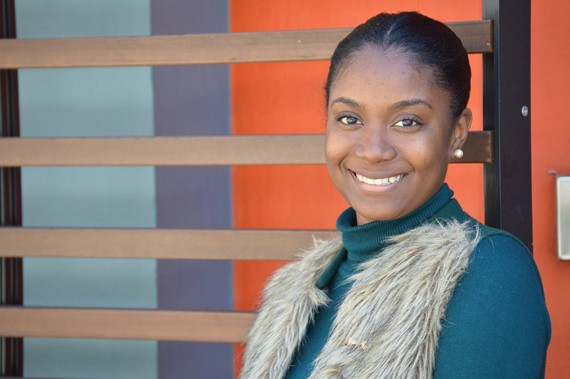
INTERSTICE Architects / CIWI Program Intern Alanna Johnson (Photo Credit: Karwanna Dyson)
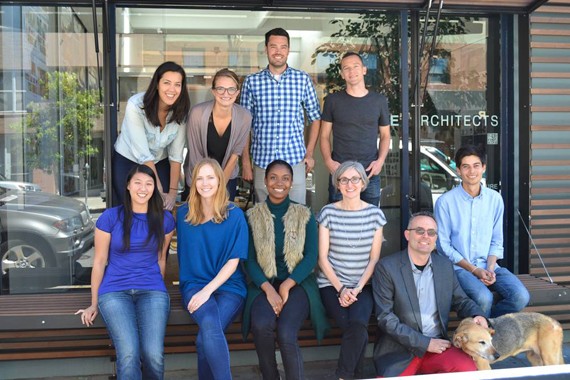
INTERSTICE Architects Team at 1173 Sutter Street (Photo Credit: Karwanna Dyson)
INTERSTICE Begins work on the Lower Polk Alleyways District Initiative
In coordination with Lower Polk Neighbors, LPN, and the newly established Lower Polk Community Benefit District, CBD, INTERSTICE Architects has begun working with the community on an Improvement Initiative to create and define a new Polk Alleyways District in the heart of the Lower Polk neighborhood. There are six uniquely situated Alleys in the Lower Polk Neighborhood that extend outward from the Polk Street commercial spine. These two block long intimate alleyways form a finer urban grain to the central core of this rapidly changing neighborhood – extending from Olive at the South to Austin Alley at the North, and bounded on the West by Van Ness Avenue and East by Larkin Street.
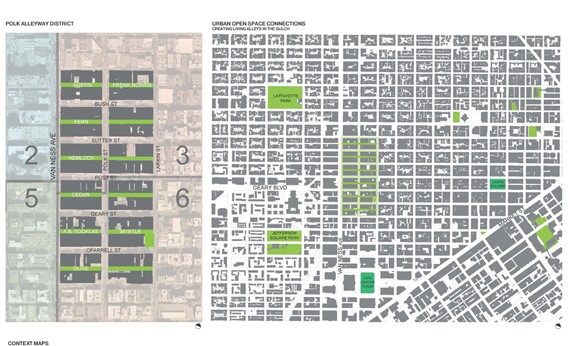
INTERSTICE recognizes the dramatic need to understand and re-envision these five alleys as open space opportunities, instead of underutilized “back-alleys”often viewed as problems, and is collaborating with the LPN and CBD to identify opportunities for community engagement, physical changes, and future funding opportunities. In recognition of these public streets cumulatively as a significant open space resource, IA proposes studying them as a whole and as integral parts of a neighborhood core. In this way each can be uniquely and individually integrated into a larger, planned amenity for the whole neighborhood, which is desperately in need of improved green spaces and quality shared public space.
IA has completed the initial phase of existing resource documentation and introduced the existing conditions studies at the LPN meeting on August 12, enjoying initial feedback from the community. All who attended this meeting, as well as any persons in the Lower Polk neighborhood, are encouraged to join the upcoming workshop in October to share ideas and aspirations for the alleys.
Please link to the LPN newsletter and visit the site to keep up with announcements and community outreach workshops in the months ahead, as a comprehensive Master Plan evolves treating the Polk Alleys as a treasured asset and destination in this vibrant San Francisco neighborhood.
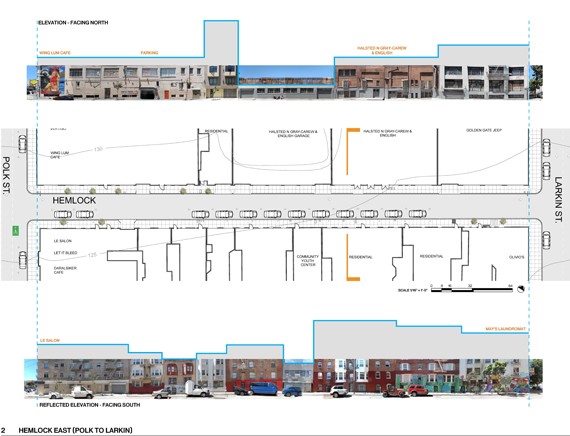
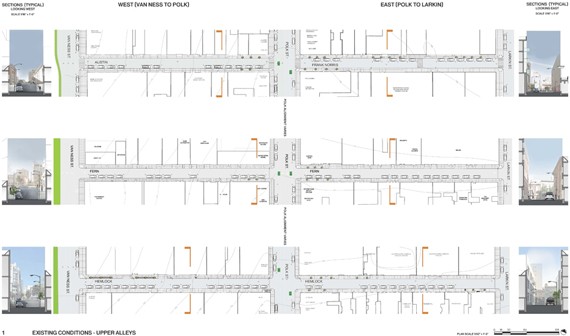

INTERSTICE Designs interactive furnishings for the San Francisco Street Food Festival 2015
This year the SFSFF is at Forest City’s Pier 70 on the SF waterfront. Now in our sixth year of partnership with La Cocina, INTERSTICE Architects designed and led the volunteer construction effort to reanimate thousands of shipping palettes and recycled plywood to create banquettes, serpentine benches, bars and entire islands for stage seating, eating, socializing, dining and drinking at this year’s fabulous three day event hosting the festival’s growing popularity and fan base.
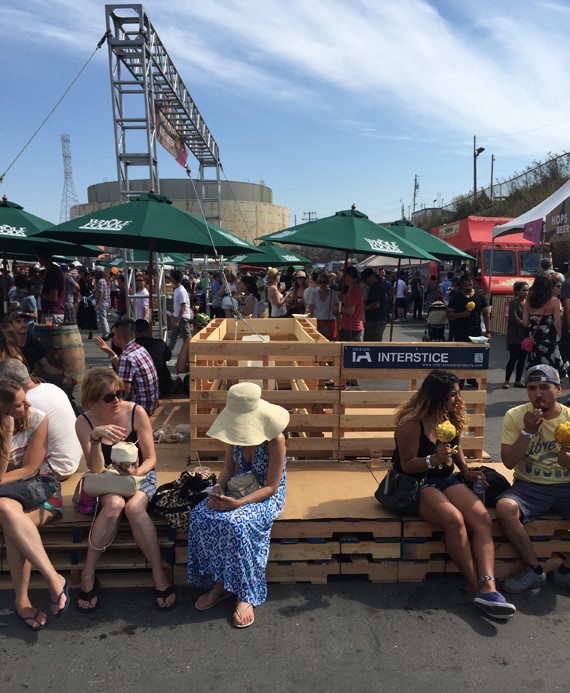
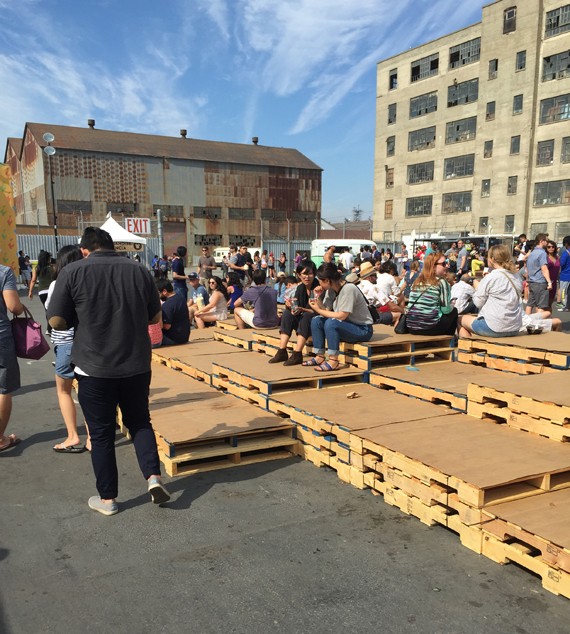
Personally and professionally, INTERSTICE Architects create from an immersed point of view with a deep commitment to the ephemeral urban experience. We strive to explore the potential of communities through their appropriation of urban space, and enhancing the connection between San Francisco’s food culture with the greater community through design by using unconventional materials to create inventive forms. This festival and its important contribution to the Non Profit La Cocina – an inspiring woman centered entrepreneurial kitchen incubator is a perfect venue for our dual disciplinary focus.
La Cocina is a groundbreaking food business incubator that has serving the Bay Area since 2005. Their mission is to cultivate low income food entrepreneurs as they formalize and grow their business by providing affordable kitchen space, industry specific technical assistance and access to market opportunities.
Come support and celebrate La Cocina’s fantastic efforts by joining us in enjoying all of the food at the San Francisco Street Food Festival! And relax on the islands of giant street scale furnishings that we developed for the ephemeral event. – before they all go back to being shipping pallets again next week!
Pier 70, near the corner of 22nd Street and Illinois Street, in the Dogpatch neighborhood of San Francisco’s bayside waterfront.
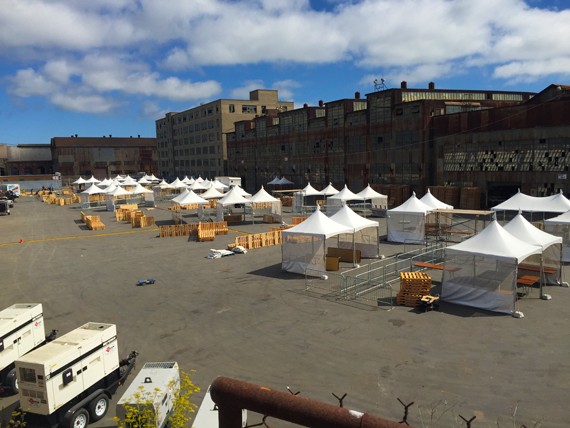
Preparation underway for the SF Street Food Festival
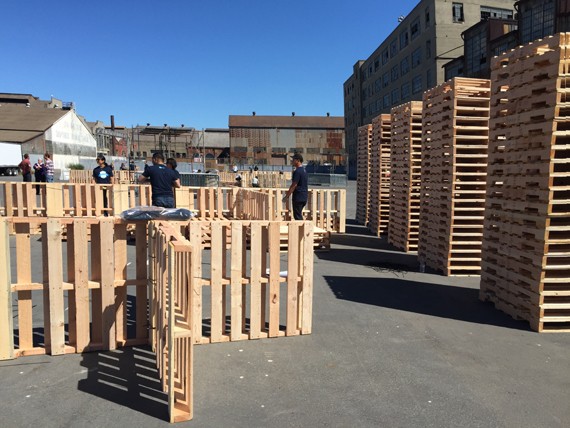
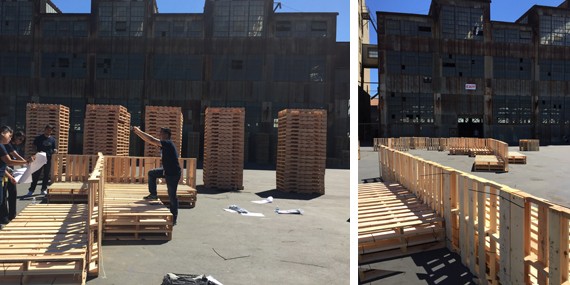

IA Sunset Parklet Wins AIASF Urban Design Award
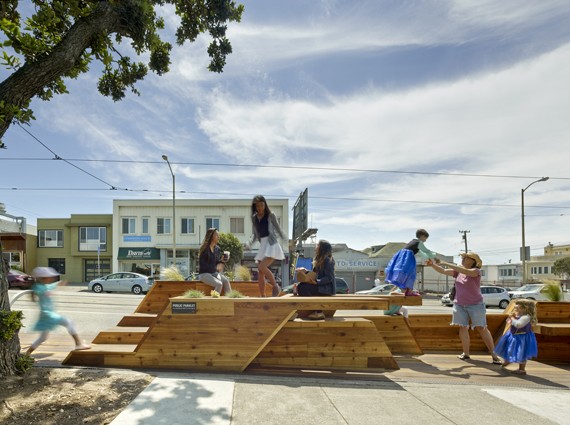
We are extremely excited to be a winner this year at the SFAIA Architectural Awards Gala. INTERSTICE receives the Urban Design Award for 2015 for its Sunset Parklet, which was featured in the NACTO International Design of Cities conference last fall. The Sunset Parklet challenges the stereotypical “café patio” to leverage a complex program into a singular and synthetic sculptural expression that prioritizes functionality over the figural. The pro-bono design project is a monolithic “riff” on the diversity of SF’s street sections – by which four adjacent “streets” undulate and double back to create a rich interplay of ground, seats, lounge chairs, tables, benches, and planters.
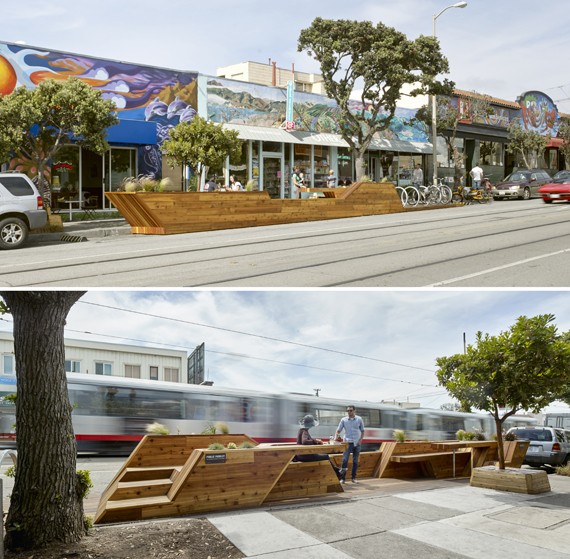
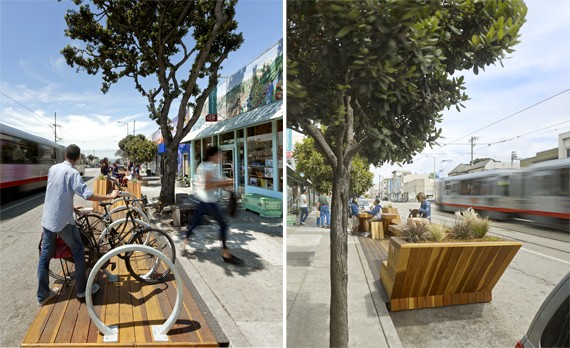
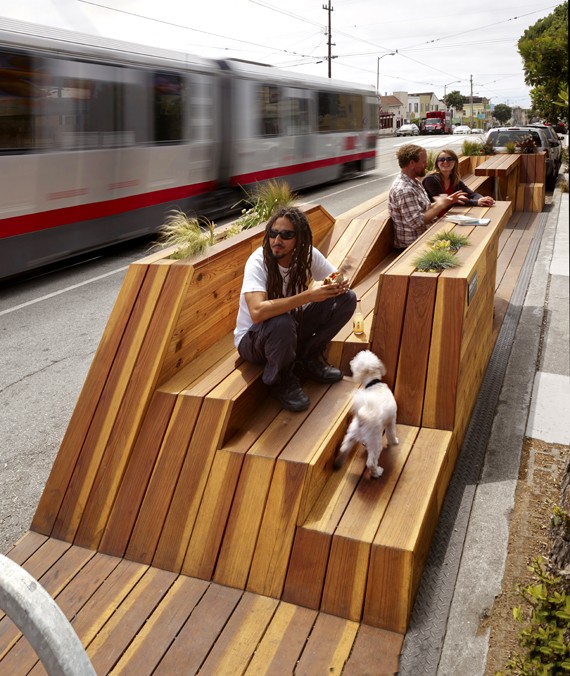
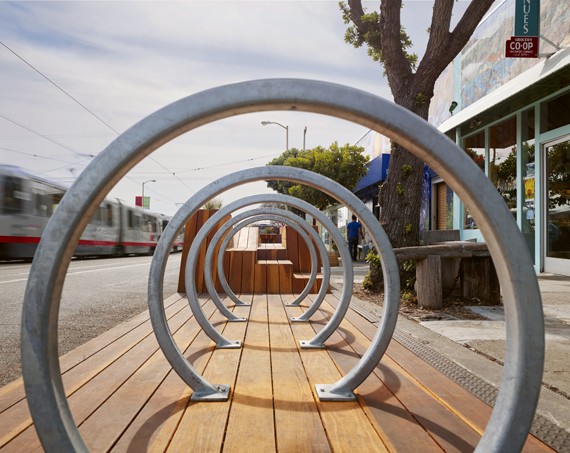
From east to west, the design incorporates a bike parking deck, which divides into individual strips that rise and fall creating complex adjacencies as they pass each other, enfolding a wide variety of program opportunities and a rich diversity of formal “readings.” Constructed of sustainable and reclaimed materials in compliance with DPW’s Guidelines, the Sunset Parklet is now a new public amenity designed for two local community oriented businesses in San Francisco’s Outer Sunset district on the Judah light-rail transit line. INTERSTICE Architects took on the controversial 50ft-long site (2.5 parking spaces) to help Other Avenues Whole Food Co-op Market and the popular Sea Breeze Café develop and realize a simple, well detailed and synthetic solution to their multi-headed program demands and complex public process hurdles. We are proud to have helped this enthusiastic community both politically to galvanize support, and in its funding efforts over a grueling two-year process to become a point of local pride.
As one local observed, “it’s not like the other parklets … It’s more like a big sculpture … kids just can’t stop climbing all over it.”
Indoor Trees at the Office
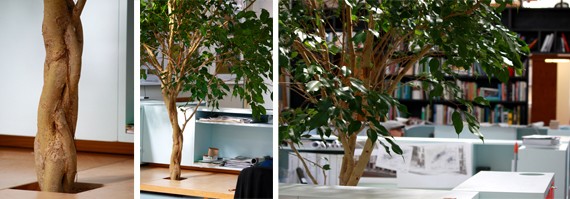
The new trees have arrived and are being placed around our designer’s desks. The canopy provides shade for the studio, along with a dash of natural beauty.
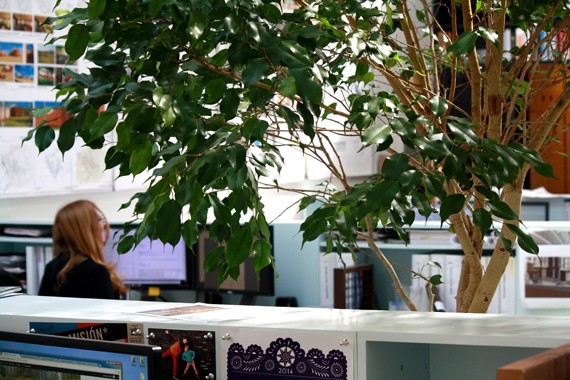
New Studio Facade Construction
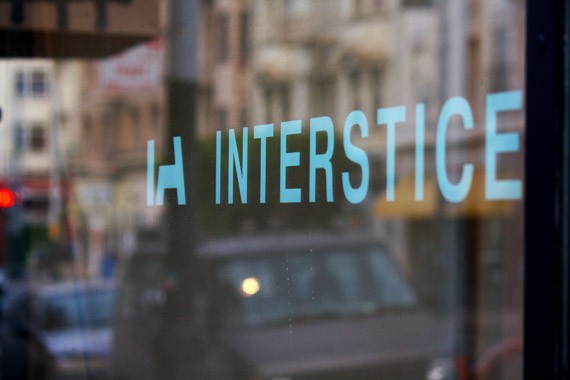
The paint is up and the raw materials are here!
The new front screen INTERSTICE designed, as an experiment with the Bosch Rexroth System, is being built by the IA team in-house.
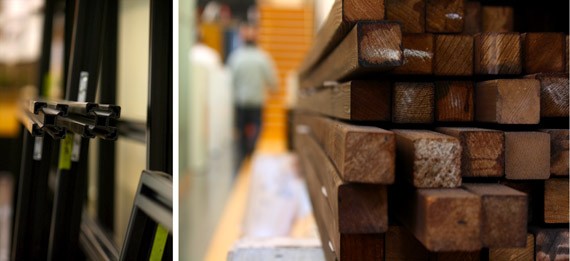
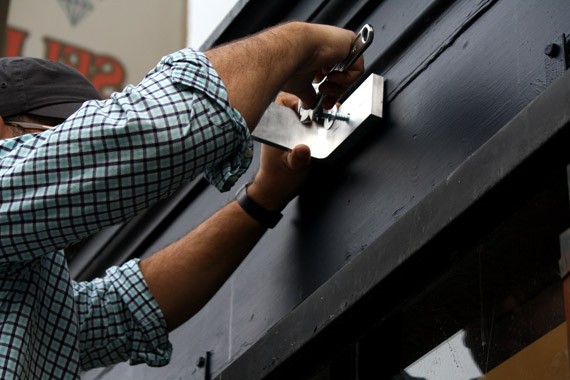
INTERSTICE Completes Design/Build for Ghirardelli Square Holiday Market
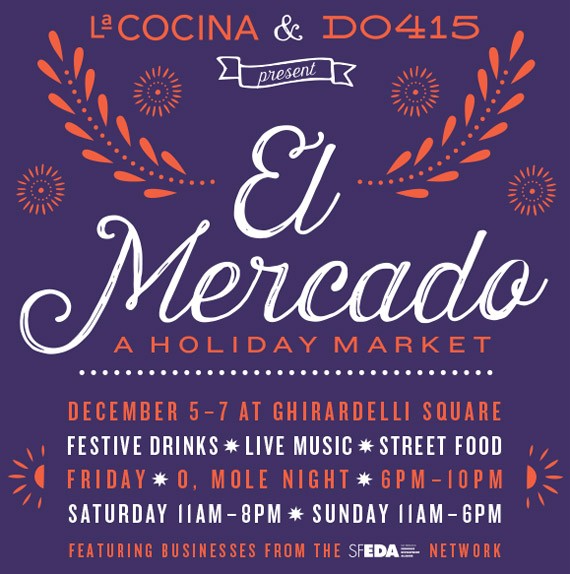
INTERSTICE Architects designed the interior environment for this years “2014 El Mercado” Holiday Market, in partnership with local non-profit, La Cocina. The existing raw space is reconfigured using re-purposed shipping pallets and locally-sourced wine barrels to create spatial definition and material texture emphasizing the pop-up market’s retail displays.
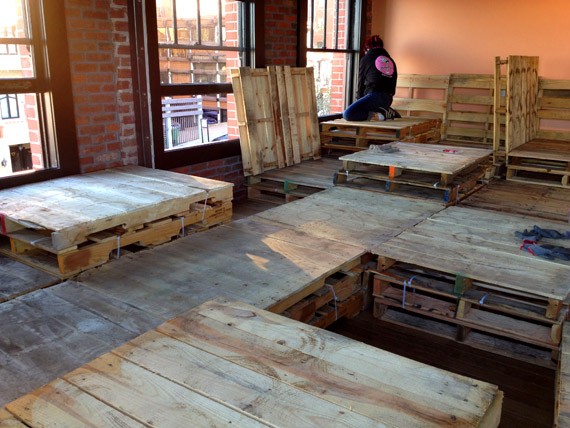

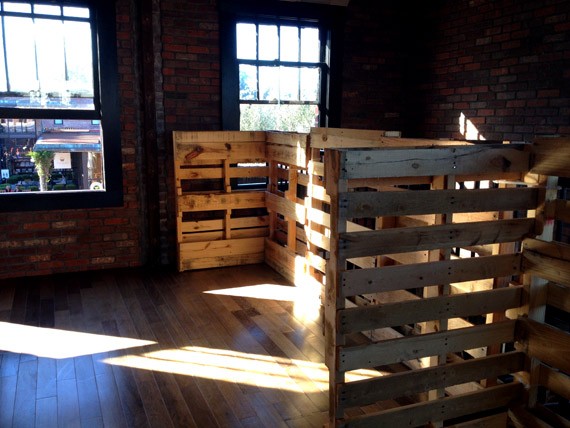
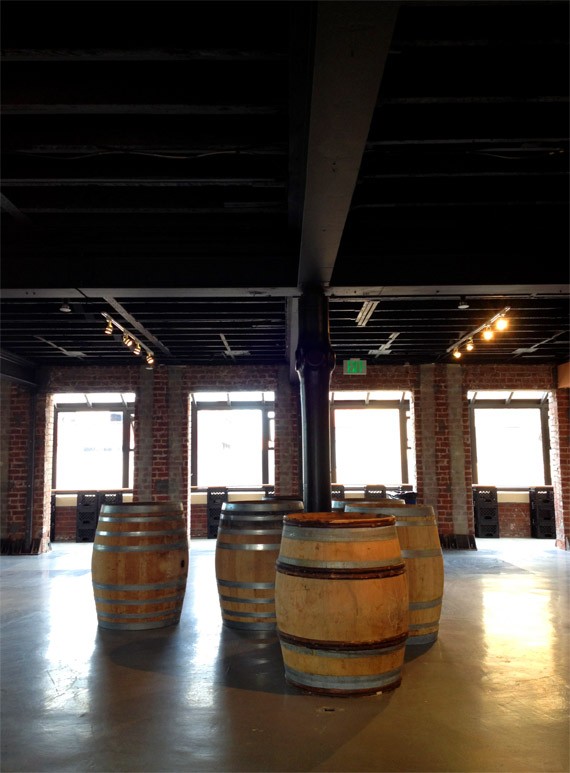
Re-using plywood from the SF Street Food Festival, INTERSTICE re-programed the interior space for vending, seating, pathway and conversation nooks. The simple and restrained palette helps to unify the varied local crafts and holiday food selections. Festive lighting and a topographic “pallet lounge” on the second floor complete the holiday atmosphere for this year’s seasonal market place in San Francisco’s famed Ghirardelli Square.
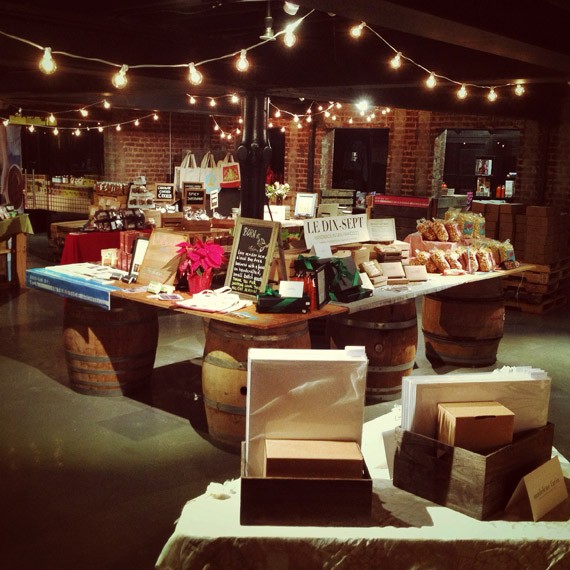
Defining "Home"
Our Principal Architect, Andrew Dunbar, participated in the Novedge panel for “How to Succeed in Architecture: Third Places – The Architecture of Sharing”.
Each panelist was asked to explain what the term “Home” means to them in their personal life and in their practice.
Home, of course, works on many levels. I think at the very basic level it’s a kind of center… not so much geographical, it is ontological. It has a lot to do with meaning. It has very broad repercussions but also very specific qualities that belong to a sense of safety, protection and place.
My home is a city, but it’s also a place.
I’ve allowed San Francisco to change me. I’ve permitted the nesting of San Francisco to have affected me in such a way that I can be perceived as a San Franciscan.
We make it our own, and from that centering point, we are ourselves. – Dunbar
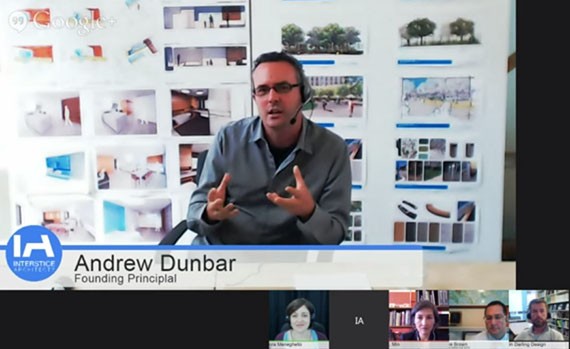
The full video can be found here.
Andrew Dunbar, "How to Succeed in Architecture" Panelist
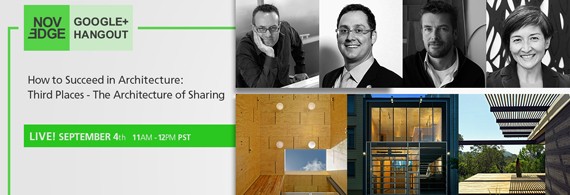
Our Principal and co-founder, Andrew Dunbar, will be one of four panelists for Novedge’s live Google+ Hangout on the topic of “How to Succeed in Architecture: Third Places – The Architecture of Sharing”.
In keeping with the theme of “Home” for the SF Architecture and the City festival, Novedge will lead this discussion on the topic of “Third Places”, or how we create innovative “homes” in our public environments through opportunities to eat, exercise, engage and collaborate.
Tune in on September 4th at 11am. More information can be found here: http://www.novedge.com/how-to-succeed-in-architecture/Third-Places-The-Architecture-of-Sharing/
Architecture is invention. Oscar Niemeyer





